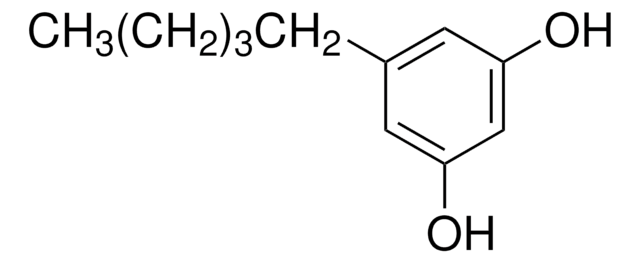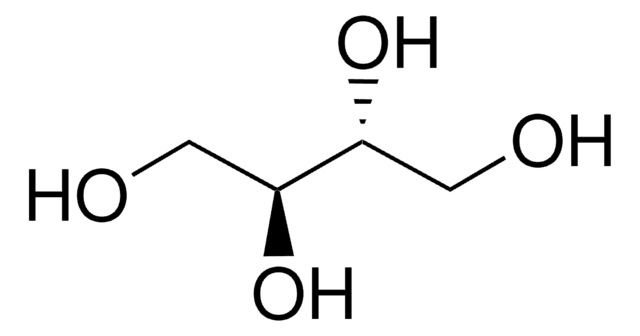8.03561
1,10-Decanediol
for synthesis
Synonym(s):
1,10-Decanediol, Decamethylene glycol
About This Item
Recommended Products
vapor pressure
<0.1 hPa ( 20 °C)
Quality Level
Assay
≥98.0% (GC)
form
solid
autoignition temp.
320 °C (DIN 51794)
potency
>10000 mg/kg LD50, oral (Rat)
>2000 mg/kg LD50, skin (Rat)
bp
297 °C/1013 hPa
mp
72 °C
transition temp
flash point 152 °C (DIN 51758)
solubility
0.7 g/L
density
0.891 g/cm3 at 80 °C
bulk density
550 kg/m3
storage temp.
2-30°C
InChI
1S/C10H22O2/c11-9-7-5-3-1-2-4-6-8-10-12/h11-12H,1-10H2
InChI key
FOTKYAAJKYLFFN-UHFFFAOYSA-N
Application
- Development of new aliphatic biocompatible polymers from PEG 400 for their applications: This research explored the synthesis of biocompatible polymers using 1,10-decanediol and other diols with PEG 400 by melt polycondensation, highlighting the catalytic role of TiIV isopropoxide (B Yamini, R Nanthini, 2019).
- Role of L-alanine for redox self-sufficient amination of alcohols: This study examined the amination of 1,10-decanediol among other alcohols in E. coli, demonstrating insights into metabolic pathways for biosynthesis (S Klatte, VF Wendisch, 2015).
- The role of transesterifications in reversible polycondensations and a reinvestigation of the Jacobson–Beckmann–Stockmayer experiments: The study revisits polycondensation reactions involving 1,10-decanediol, providing a detailed analysis of the mechanisms and catalytic effects of toluene sulfonic acid (HR Kricheldorf, SM Weidner, J Falkenhagen, 2022).
- N-Alkylisoquinolinium bromides and α, ψ-alkanediols: Eutectic systems with co-crystal formation: This study explores the eutectic formations between 1,10-decanediol and various alkylisoquinolinium bromides, discussing the properties and applications of the resulting co-crystals (M Więckowski, P Guńka, N Świtalska, 2024).
Analysis Note
Melting range (lower value): ≥ 70 °C
Melting range (upper value): ≤ 73 °C
Identity (IR): passes test
Storage Class Code
11 - Combustible Solids
WGK
WGK 1
Flash Point(F)
305.6 °F - closed cup
Flash Point(C)
152 °C - closed cup
Certificates of Analysis (COA)
Search for Certificates of Analysis (COA) by entering the products Lot/Batch Number. Lot and Batch Numbers can be found on a product’s label following the words ‘Lot’ or ‘Batch’.
Already Own This Product?
Find documentation for the products that you have recently purchased in the Document Library.
Our team of scientists has experience in all areas of research including Life Science, Material Science, Chemical Synthesis, Chromatography, Analytical and many others.
Contact Technical Service







